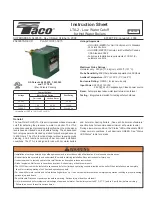
5
Installing the boiler
Logano GB125 BE US/CA - Subject to technical modifications.
26
The boiler has the potential to produce significant
amounts of condensate which must be drained and
disposed of properly.
Follow all applicable codes and regulations covering the
disposal of condensate originating from combustion
appliances.
• Ensure that untreated condensate is only passing
through hoses and piping suitable for very low pH
levels.
• If the building is connected to a municipal sewage
system, observe the rules and regulations for disposal
into the system.
• If the building is connected to a septic system, a
neutralizer is recommended to avoid damage to the
system.
• Ensure the siphon is always filled with fluid to avoid
unpleasant odors.
Installing and filling the siphon and neutralizer
B
Install the nut on the boiler condensate drain (Fig. 22,
[1]).
B
Install the o-ring on the boiler condensate drain pipe.
B
Merge the siphon with the boiler condensate drain and
tighten the nut [1].
B
Connect the drain hose [4] from the siphon [2] to the
neutralizer [5], and from there to the drain. Follow the
instructions provided with the neutralizer [5].
B
If fluid cannot be drained away by gravity, install a
condensate pump.
B
Fill the siphon with water through the service cover [3].
Fig. 22 Rear side of the boiler with siphon and
neutralization
1
Condensate drain nut (boiler)
2
Siphon
3
Service cover (siphon)
4
Drain hose (acid-resistant)
5
Neutralizer
DANGER:
Risk to life from flue gas
poisoning!
A dry siphon or leaky condensate
connections can release flue gases into the
building.
B
Check the siphon fluid level regularly and
fill with water if needed.
1
2
3
4
5
6 720 649 309-06.1ITL
















































